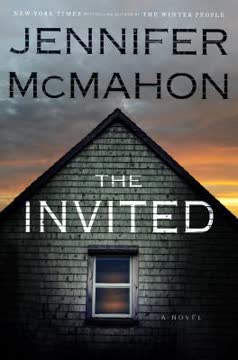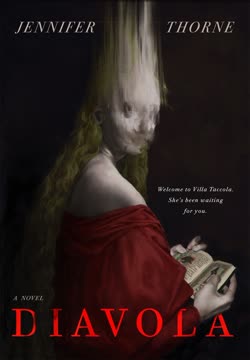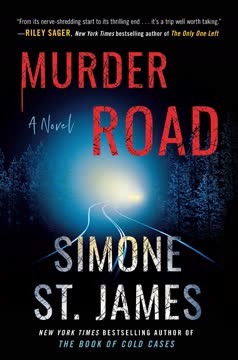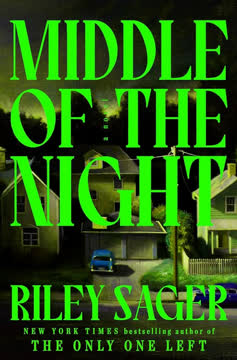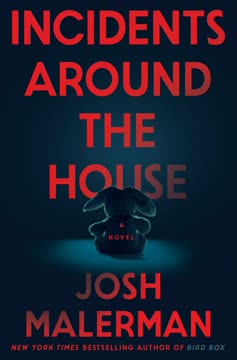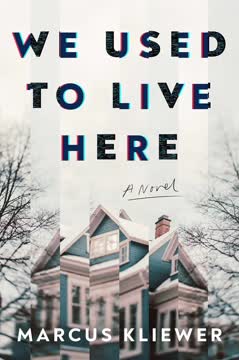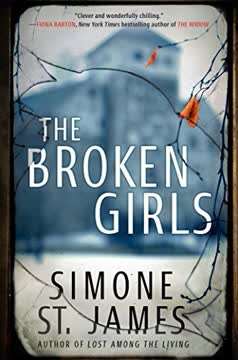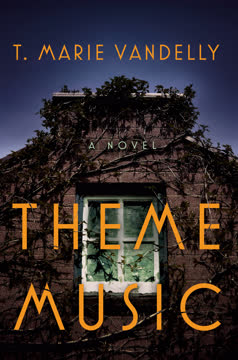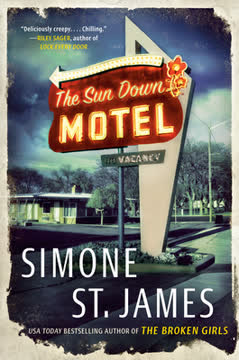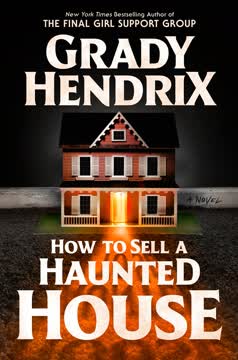Plot Summary
The Witch's Last Stand
In 1924, Hattie Breckenridge, a woman with a gift—or curse—for hearing voices and foreseeing tragedy, is hunted by her Vermont town after a schoolhouse fire kills children. Despite her warnings, she is blamed, called a witch, and hanged from the "Great Grandmother Tree" by neighbors she once helped. Her daughter Jane escapes, hidden in a root cellar, as Hattie faces her end with defiance, vowing she and the land are one. The mob's violence is both personal and collective, rooted in fear of the unknown and the need for a scapegoat. Hattie's death plants the seed for a haunting that will echo through generations, her spirit bound to the bog and the secrets buried beneath.
Dream House Foundations
Helen and Nate, grieving and restless after Helen's father's death, leave their secure teaching jobs to build a dream house on Vermont land rumored to be haunted. Helen craves history and meaning; Nate, a rational science teacher, is drawn to the land's wildness. As they pour the foundation, Helen feels both hope and unease, sensing the land's pull and the weight of local legend. Their relationship is tested by the challenges of building, the isolation, and the subtle hostility of the small town. The foundation is more than concrete—it's the start of a journey into the past, into buried trauma, and into the heart of a haunting.
Odd Oliver's Obsession
Fourteen-year-old Olive Kissner, dubbed "Odd Oliver" at school, is obsessed with finding Hattie's legendary treasure, convinced it will bring her runaway mother home. Her life is marked by loss: her mother's mysterious disappearance, her father's depression, and a house in perpetual renovation. Olive's only friend, Mike, is loyal but skeptical. Guided by stories from her mother and eccentric Aunt Riley, Olive searches the bog with a metal detector, clinging to hope and destiny. Her quest is both literal and symbolic—a search for belonging, for answers, and for the power to change her fate.
Night Screams and Omens
Helen's first nights in the trailer are plagued by terrifying screams and the sense of being watched. She finds a strange bundle on the doorstep: a tooth and a nail, wrapped like a curse or warning. Nate dismisses her fears as animal noises, but Helen's anxiety grows. The couple's attempts to build are marred by small failures, missing objects, and a growing sense of unease. The land's history seeps into their lives, blurring the line between past and present. The bog, the woods, and the foundation all seem to pulse with secrets, as if Hattie's spirit is testing the newcomers.
Gifts Left at Doorsteps
Olive, desperate to keep Helen and Nate from interfering with her treasure hunt, steals from them and leaves unsettling "gifts" to scare them away. When caught, she confesses her motives: her mother's disappearance, her belief in the treasure, and her hope that finding it will restore her family. Instead of punishment, Helen and Nate offer her work to repay what she took, forging an uneasy alliance. Olive's maps, red strings, and methodical searching reveal her intelligence and pain. The adults' willingness to help her marks a turning point, as the living and the haunted begin to intertwine.
Haunted Histories Unveiled
Helen's research at the library and historical society uncovers the tragic history of Hattie and her descendants. She learns of the schoolhouse fire, the mob's violence, and the rumors of buried treasure. The town's suspicion of outsiders intensifies as Helen's interest in witchcraft and local lore grows. She discovers that objects—beams from the hanging tree, bricks from a burned mill, a mantel from a murder-suicide—carry the weight of the past. Each artifact she brings into the house seems to draw the spirits closer, blurring the boundaries between history and haunting, and between Helen's life and Hattie's curse.
The Treasure's True Heir
Helen's genealogical detective work reveals that Olive is Hattie's great-great-granddaughter, and that Olive's mother, Lori, was the last to possess Hattie's necklace and perhaps the treasure. Lori's disappearance is linked to the town's secretive spirit circle, Aunt Riley's jealousy, and the violent legacy of the Breckenridge women. As Helen and Nate race to find Olive, they realize the danger is not just supernatural but human: jealousy, obsession, and the desire for power have deadly consequences. The treasure is not just gold, but the inheritance of trauma, secrets, and the need for redemption.
Ghosts in the Walls
As the house nears completion, Helen and Nate are haunted by increasingly vivid apparitions: Hattie, Jane, and Ann appear, drawn by the artifacts and the family's unresolved pain. Nate becomes obsessed with a white doe—Hattie's spirit in animal form—while Helen's dreams and waking visions blur together. Olive, wearing Hattie's necklace, experiences nightmares and moments of lost time, fearing she is being possessed. Aunt Riley's involvement with the spirit circle and her own longing for Hattie's power come to a head. The house becomes an "in-between place," a gathering point for the living and the dead, for healing or destruction.
The White Doe's Secret
Nate's pursuit of the white doe leads him to a vision of Hattie's crooked house, where he confronts the reality of the haunting and his own unraveling. Helen, following Hattie's guidance, realizes that the spirits want to be reunited, to have their stories told and their pain acknowledged. Olive's search for her mother and the treasure brings her into direct conflict with Riley, who is revealed as both protector and threat. The white doe, the necklace, and the bog all converge as symbols of the family's curse and the possibility of release.
Family Curses and Confessions
The truth about Lori's disappearance comes to light: Aunt Riley, consumed by jealousy and her own longing for Hattie's favor, killed Lori in a confrontation over the treasure. Olive's father, Dustin, is revealed as broken but not murderous. The spirit circle's rituals, the town's complicity, and the legacy of violence are exposed. Helen, Nate, and Olive confront Riley in the bog, where the past and present collide in a final struggle. The necklace, the ax, and the white doe all play roles in the resolution, as the living must choose whether to perpetuate or break the cycle of pain.
The Circle Convenes
Helen and Riley attend a spirit circle at Dicky's hotel, where the townspeople attempt to summon Hattie for guidance and protection. The ritual, centered on the chalked symbol matching Hattie's necklace, blurs the line between performance and true contact. Olive, hiding and watching, sees her mother's shoes and realizes the depth of the deception and longing in the group. The séance becomes a crucible for the community's fears, desires, and guilt, as the dead are invoked and the living are forced to confront their own darkness.
The Necklace's Power
Olive discovers that Hattie's necklace is a conduit for communication with the dead, acting as a pendulum that answers her questions and leads her through the bog. The symbol—circle, triangle, square, eye—represents the door between worlds, the union of spirit and matter. Olive's use of the necklace brings her closer to the truth about her mother, the treasure, and her own inheritance. The necklace's power is both a gift and a burden, offering guidance but also exposing Olive to the dangers of obsession and possession.
Betrayal in the Bog
In a climactic confrontation at the bog, Riley, disguised as Hattie, attacks Olive, desperate to claim the treasure and the power she believes is her due. Helen and Nate intervene, and the white doe appears, symbolizing Hattie's enduring presence and protection. Riley's confession and arrest bring closure to the cycle of violence, but not without cost. The bog yields up Lori's body, and the truth of her fate is finally known. The community's secrets are exposed, and the living must reckon with the consequences of their actions.
The Dead Speak Back
With the house complete, Helen, Nate, and Olive gather the artifacts—beam, bricks, mantel, ax, necklace—creating a space where the spirits of Hattie, Jane, Ann, and Lori can be at peace. The haunting is not banished but transformed: the dead are remembered, their stories told, their pain honored. Olive and her father begin to heal, supported by Helen, Nate, and Mike. The bog, once a place of fear and violence, becomes a site of memory and reconciliation. The in-between place is now a home for both the living and the dead.
The In-Between Place
Helen and Nate's house, built on haunted ground and filled with the relics of tragedy, becomes a place of belonging and hope. Olive, now recognized as Hattie's heir, finds strength in her lineage and in the community that has formed around her. The cycles of violence and secrecy are broken, replaced by honesty, support, and the willingness to face the past. The bog remains mysterious, but its power is no longer solely destructive. The in-between place is a testament to survival, adaptation, and the possibility of redemption.
Truths Unearthed
Olive, guided by Hattie's necklace and her mother's diary, finally locates the treasure buried in the bog. The journey is as important as the discovery: the treasure represents not just wealth, but the truth, the end of secrets, and the beginning of healing. The diary reveals Lori's fears, her love, and the circumstances of her death. The community, once complicit in violence and silence, now bears witness to the truth. The past is not erased, but it is faced, and the future is reclaimed.
The Treasure Revealed
A year later, Olive stands at the bog, the treasure finally in her hands. The house is finished, her family is healing, and the spirits are at rest. The necklace, the ax, and the artifacts remain as reminders of the past, but their power is now one of connection, not curse. Olive, Helen, Nate, and Mike form a new family, bound by truth and resilience. The bog, once a site of horror, is now a place of memory and hope. The story ends with the dead acknowledged, the living united, and the treasure—literal and metaphorical—finally revealed.
Characters
Hattie Breckenridge
Hattie is the heart of the haunting: a woman gifted with second sight, ostracized and ultimately executed by her community after a tragedy she foresaw but could not prevent. Her relationship with her daughter Jane is marked by love and secrecy, her own mind closed to Hattie's visions. Hattie's psychological complexity lies in her struggle to accept her gift as both blessing and curse, and her ultimate defiance in the face of death. Her spirit, bound to the bog, becomes a force that shapes generations, seeking justice, reunion, and peace. Hattie's legacy is both a warning about the dangers of fear and a testament to the power of memory.
Helen Wetherell
Helen is a woman in transition, grieving her father and searching for purpose. Her move to Vermont and the building of the dream house are acts of hope and desperation. Helen's relationship with Nate is loving but strained by their differing worldviews and the pressures of isolation and haunting. As she uncovers the history of Hattie and her descendants, Helen becomes both detective and medium, drawn into the web of the past. Her psychological journey is one of confronting fear, embracing ambiguity, and learning to honor both the living and the dead. Helen's empathy and determination make her the bridge between worlds.
Olive Kissner
Olive is a fourteen-year-old girl marked by loss, ridicule, and obsession. Her mother's disappearance and her father's depression leave her isolated, clinging to the hope of finding Hattie's treasure. Olive's intelligence, resourcefulness, and vulnerability drive the narrative, as she navigates friendship, betrayal, and the supernatural. Her relationship with Aunt Riley is both supportive and dangerous, as Riley's own obsessions threaten Olive's safety. Olive's psychological arc is one of moving from magical thinking to hard-won truth, from longing for rescue to claiming her own power as Hattie's true heir.
Nate Wetherell
Nate is Helen's husband, a science teacher who seeks order and meaning in the natural world. His initial skepticism about the haunting gives way to obsession, particularly with the white doe—a manifestation of Hattie's spirit. Nate's relationship with Helen is tested by the stresses of building, isolation, and the supernatural. His psychological unraveling mirrors the house's construction: what begins as solid and rational becomes porous and haunted. Nate's journey is one of confronting the limits of reason, accepting ambiguity, and ultimately supporting Helen and Olive in their quest for truth.
Lori (Gloria) Kissner
Lori, Olive's mother and Hattie's great-granddaughter, is the linchpin of the family's modern tragedy. Her obsession with the treasure, her involvement with the spirit circle, and her attempts to protect Olive all stem from her inheritance of trauma and longing. Lori's disappearance is the central mystery, her fate entwined with Aunt Riley's jealousy and the town's secrets. Her diary reveals her fears, her love, and her ultimate victimization. Lori's psychological complexity lies in her dual role as seeker and sacrifice, as both the lost and the key to the family's redemption.
Riley
Riley is Olive's aunt, a tattooed, spiritual, and fiercely independent woman who becomes both mentor and threat. Her longing for Hattie's power and her resentment of Lori's "chosen" status drive her to betrayal and violence. Riley's psychological arc is one of envy, obsession, and self-destruction, as her desire for connection and meaning leads her to cross moral boundaries. Her relationship with Olive is fraught, ultimately culminating in a dangerous confrontation. Riley embodies the dangers of unchecked longing and the destructive potential of the past.
The White Doe
The white doe is both a literal animal and a manifestation of Hattie's spirit, appearing to Nate and others as a guide, a warning, and a link between worlds. The doe's appearances are tied to moments of crisis, revelation, and danger. As a symbol, the white doe represents the persistence of the past, the possibility of transformation, and the thin boundary between the natural and supernatural. The doe's role is both protective and unsettling, leading characters deeper into the bog's mysteries and their own psyches.
Mike
Mike is Olive's only true friend, a boy marked by intelligence, awkwardness, and loyalty. His skepticism and concern for Olive ground her quest, offering both support and challenge. Mike's own family history of loss and his outsider status mirror Olive's, creating a bond of understanding. His role in the narrative is to provide perspective, to question magical thinking, and to stand by Olive as she confronts the truth. Mike's presence is a reminder of the importance of friendship and the need for connection in the face of trauma.
The Spirit Circle (Dicky and others)
The spirit circle, led by Dicky, is a group of townspeople drawn to the legend of Hattie and the promise of power or protection. Their rituals, séances, and obsession with the treasure reflect the community's unresolved guilt, fear, and longing. The circle's complicity in violence, their willingness to scapegoat outsiders, and their hunger for meaning make them both dangerous and pitiable. As a collective character, they embody the dangers of groupthink, the persistence of superstition, and the need for communal reckoning.
The Bog
The bog is more than a setting—it is a character in its own right, alive with history, secrets, and the presence of the dead. It is the site of Hattie's execution, the burial of the treasure, and the convergence of past and present. The bog's shifting, treacherous ground mirrors the instability of memory and the difficulty of uncovering truth. As a symbol, the bog represents the unconscious, the inheritance of trauma, and the possibility of transformation. It is both a place of danger and a site of healing, where the living and the dead can finally meet.
Plot Devices
Intergenerational Haunting and Inheritance
The novel's structure is built on the interplay between past and present, with Hattie's execution and the subsequent tragedies of her descendants echoing through time. The haunting is both literal—ghosts, visions, and supernatural events—and metaphorical, representing the inheritance of trauma, secrets, and violence. Artifacts (the beam, bricks, mantel, ax, necklace) serve as conduits for the past, drawing the spirits into the present and forcing the living to confront what has been buried. The narrative uses foreshadowing (omens, dreams, missing objects), parallel storylines (Helen's building, Olive's searching), and shifting perspectives to create a sense of inevitability and suspense. The "in-between place" of the house and bog becomes a crucible for transformation, where the cycles of violence can be broken and the dead can be acknowledged.
Analysis
Jennifer McMahon's The Invited is a modern gothic that explores the enduring power of the past, the inheritance of trauma, and the possibility of redemption through truth-telling and connection. The novel interrogates the ways communities create and sustain scapegoats, the dangers of collective fear, and the seductive pull of secrets and forbidden knowledge. Through its interwoven narratives—Helen's quest for meaning, Olive's search for her mother, and the haunting legacy of Hattie—the book examines how history is both a burden and a resource. The artifacts that fill the new house are not just relics but reminders that the past is never truly past; it must be faced, honored, and integrated. The bog, as a living symbol, represents the unconscious, the site of both danger and healing. Ultimately, The Invited suggests that peace comes not from banishing ghosts but from inviting them in, listening to their stories, and building a future that acknowledges the pain and resilience of those who came before. The novel's lesson is clear: only by confronting the darkness in ourselves and our communities can we hope to break the cycle of violence and create a home—for the living and the dead alike.
Last updated:
Review Summary
The Invited is a supernatural mystery about a couple building a house on haunted land. Most readers found it atmospheric and enjoyable, praising the historical elements and creepy atmosphere. Some felt it lacked true scares, categorizing it more as a ghost story than horror. The characters and writing style received mixed reactions. Many appreciated the slow-building tension and intertwining storylines, while others found parts predictable or unrealistic. Overall, reviewers recommended it for fans of paranormal fiction and atmospheric reads.
